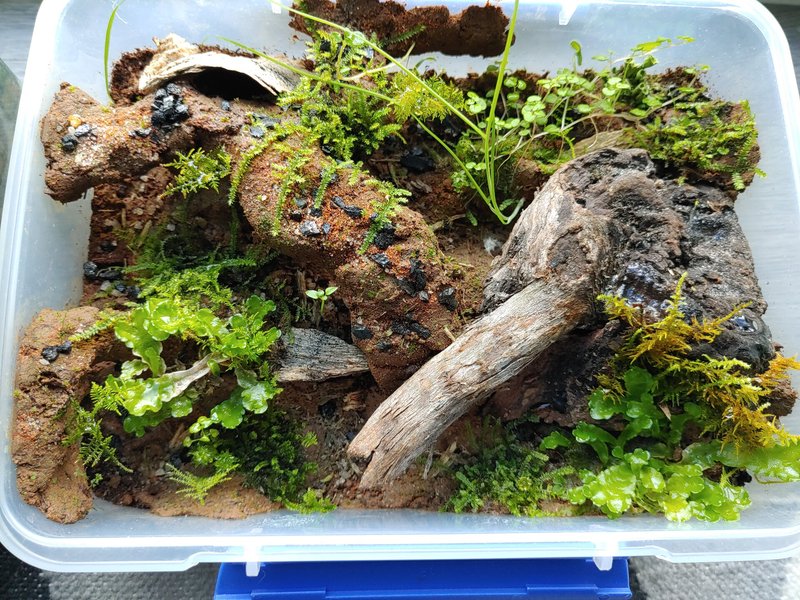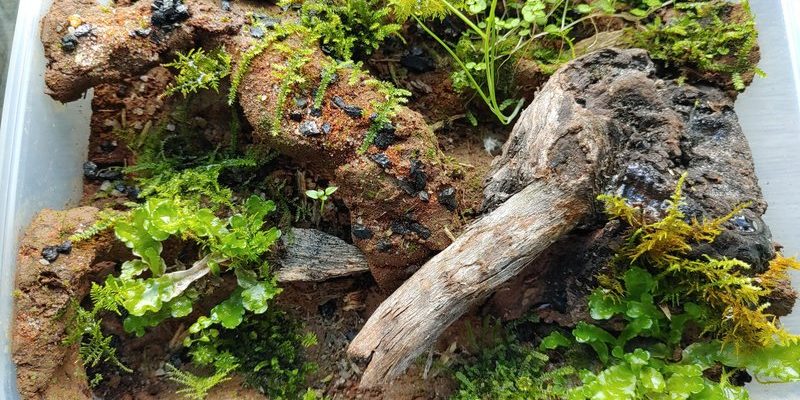
When we talk about building a habitat for captive velvet worms, it’s about creating a little slice of their natural jungle right at home. Think about it: in the wild, they thrive in damp leaf litter or under the cool shade of trees where humidity is high. So, the question is, how can you replicate those conditions? It’s simpler than you might think, and I’m here to guide you through it step-by-step.
Understanding Velvet Worms’ Natural Habitat
Before diving into the specifics of creating a habitat, it’s essential to know where these creatures come from. Velvet worms live predominantly in humid, temperate forests, hiding under logs or within leaf litter. You might picture a mini jungle filled with moisture, warmth, and plenty of dark places to hide, right? This natural setting is what they need to feel secure.
In the wild, velvet worms have a unique lifestyle. They’re nocturnal hunters, using their sticky slime to catch prey like insects. They thrive in environments that mimic these conditions, so it’s our job to create a cozy, familiar space for them at home. Quite a tall order, but with the right elements, it’s definitely achievable!
Setting Up the Right Enclosure
The first step in building a habitat is choosing the right enclosure. You want something that provides enough space and maintains high humidity levels. A terrarium or a large glass aquarium is usually a good choice. Here are some points to consider:
- Size: Aim for at least a 20-gallon tank for a small group of velvet worms.
- Material: Glass or acrylic works well, as it holds moisture and temperature better.
- Ventilation: Ensure the enclosure has a top that allows for airflow but keeps humidity in—screen mesh works great here.
Remember, the goal is to replicate a natural setting. So, consider adding some substrate—a mix of peat moss and coconut coir can work wonders. This will not only hold moisture but also give them something to burrow into and explore.
Maintaining Humidity and Temperature
Here’s the thing: velvet worms love humidity. If their environment is too dry, they can become stressed and even die. You’ll want to maintain humidity levels between 80-90%. You might be wondering how to achieve that.
One easy method is to mist the enclosure daily with water. Use a spray bottle and give the substrate a good soak, but don’t flood it. You want to create a damp microclimate, particularly in the substrate, which they’ll love. Using a small humidity gauge can help you monitor the levels—these devices are quite affordable and super handy.
As for temperature, a range of 20-24°C (68-75°F) is ideal. Too hot or too cold can lead to health problems. If your home tends to be cooler, consider using a heating pad beneath the tank, but be cautious—overheating can be detrimental.
Adding Natural Decor
Next, let’s talk about decor. Velvet worms thrive in environments that are rich and textured. Think of this as creating their little jungle gym:
- Leaf litter: Collect some leaves from a local forest, but make sure they’re pest-free. This will not only help with humidity but also provide a hiding spot.
- Branches and logs: Add small branches or pieces of bark for them to climb on and explore.
- Plants: Consider adding some small live plants—ferns or moss can work well, giving both cover and humidity.
Always make sure that anything you introduce to the habitat is free from pesticides or any harmful chemicals. You can also change things up every once in a while to keep the environment stimulating for your velvet worms.
Feeding Your Velvet Worms
You might be curious about how to feed these little guys. Velvet worms are carnivorous and typically prey on insects. To keep your captive worms healthy, you can offer them various options like:
- Fruit flies: These are small and easy for them to catch. They’re a staple food for many tiny pet creatures.
- Small beetles or crickets: Make sure these are proportionate to the size of your velvet worms.
- Commercial insect diets: Some brands offer powdered diets that can be a convenient option.
Feeding them every few days is typically sufficient. Keep an eye on their appetite and adjust the feeding schedule as necessary. You’ll know you’re doing well if they appear healthy and active in their habitat!
Monitoring Health and Behavior
It’s important to watch for signs of stress or illness. Healthy velvet worms are usually active and have a vibrant color. If they’re lethargic, have a dull appearance, or aren’t eating, you might need to check their environment.
You can also observe their behavior. They often enjoy burrowing, so seeing them digging in the substrate is a good sign. If they’re glued to the same spot for too long, perhaps the humidity needs adjusting or they don’t feel secure. Creating a safe and supportive environment is key to their well-being.
Common Challenges and Troubleshooting
Like with any pet, you might run into a few bumps along the way. Here are some common challenges and tips for troubleshooting:
1. Humidity Drops: If you notice the humidity levels dropping, increase your misting or consider adding a small water dish to the enclosure.
2. Temperature Fluctuations: If the temperature feels too cool, ensure your heating pad is functioning properly. If it’s too hot, remove it and allow the enclosure to cool down gradually.
3. Pests: If you see pests like mites or mold, remove any affected substrate and clean the enclosure carefully. Regular maintenance can prevent these issues.
Remember, you’re building a habitat that mimics their natural environment, and with a little patience and care, you’ll create a flourishing home for your velvet worms.
Building a suitable habitat for captive velvet worms is a rewarding journey. It requires some thought and effort, but the joy of watching these incredible creatures thrive in their environment is well worth it. By providing the right enclosure, maintaining humidity, adding natural decor, and keeping an eye on their health, you’ll be setting the stage for a happy home.
Honestly, it’s a bit like being a caretaker for a piece of the rainforest, right in your living room. With the right attention, your velvet worms will not only survive but truly thrive. So grab your materials, get crafty with your habitat design, and enjoy the fascinating world of these unique little beings!

